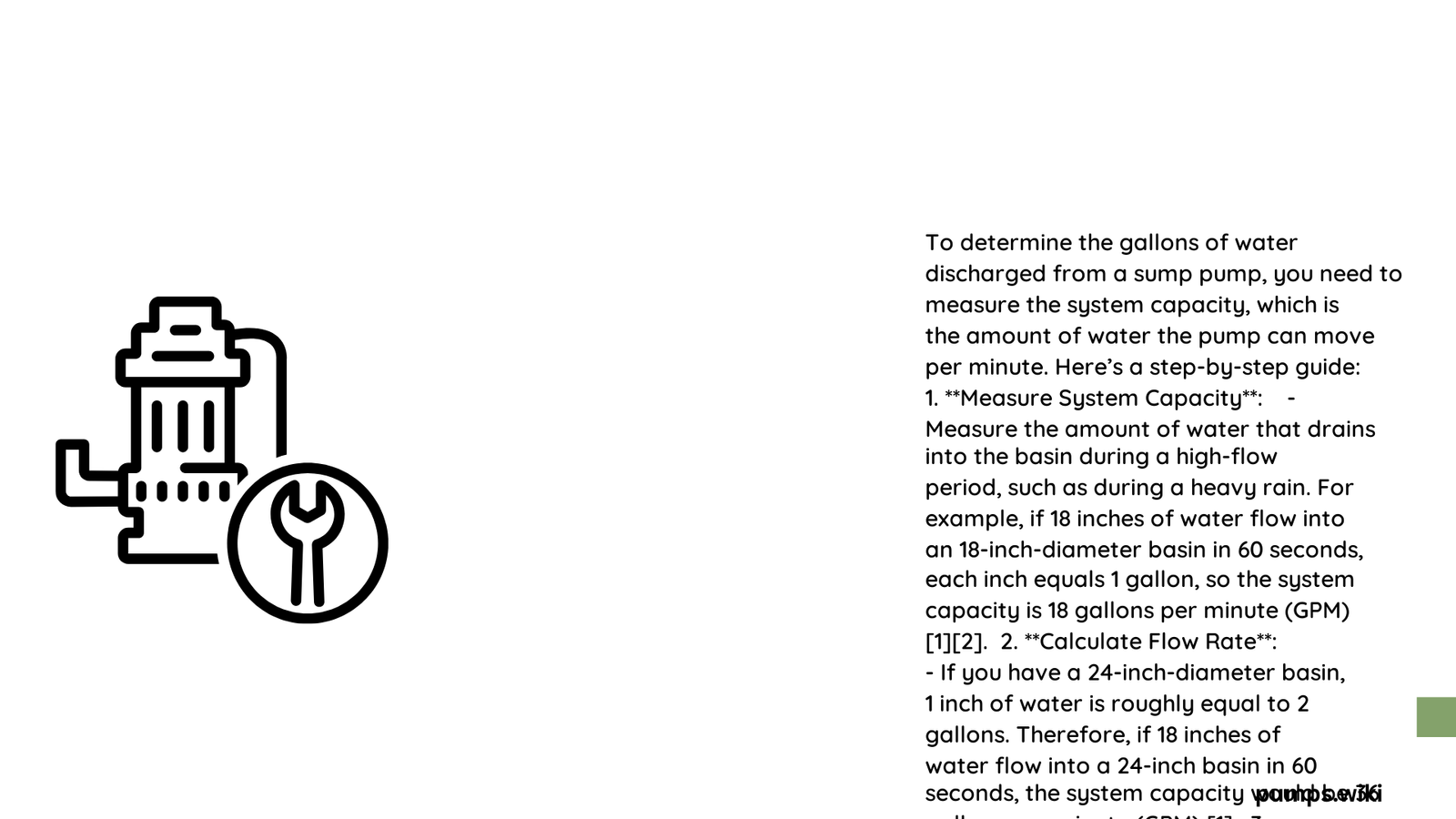Determining the gallons of water discharged from a sump pump is crucial for understanding your home’s water management system. Homeowners and professionals need accurate measurement techniques to assess pump performance, prevent potential flooding, and ensure proper drainage. This comprehensive guide explores multiple scientific methods to calculate water discharge rates, providing you with practical insights into your sump pump’s operational capacity.
What Are the Primary Methods to Calculate Sump Pump Water Discharge?
Direct Volume Measurement Technique
Water discharge calculation requires precise measurement strategies. The most straightforward approach involves using volume and time as primary variables. Here are two primary methods:
- Container Measurement Method
- Select a calibrated container with known volume
- Time how long it takes to fill the container
-
Calculate gallons per minute (GPM) using the formula:
GPM = (Container Volume) ÷ (Time in Minutes) -
Stopwatch Calculation Approach
- Use a one-gallon container
- Measure exact time to fill
- Apply the formula:
GPM = 60 ÷ (Seconds to Fill One Gallon)
What Factors Influence Sump Pump Discharge Rates?
Several critical factors impact water discharge measurements:
| Factor | Impact on Discharge |
|---|---|
| Pipe Diameter | Directly affects flow rate |
| Vertical Lift Height | Reduces pump efficiency |
| Pipe Friction | Increases resistance |
| Pump Motor Capacity | Determines maximum discharge |
How to Account for System Resistance?
Resistance factors significantly influence discharge calculations:
- Pipe Friction Loss: Increases with longer discharge pipes
- Vertical Lift: Reduces pump efficiency
- Pipe Diameter: Wider pipes reduce resistance
- Pump Specifications: Manufacturer’s rated capacity
What Advanced Techniques Exist for Precise Measurement?
Advanced measurement techniques include:
- Pressure Tank Method
- Measure time between pressure switch cycles
- Calculate volume discharged
-
Divide volume by time for GPM
-
Professional Flow Meter
- Provides most accurate measurements
- Directly monitors water flow
- Offers real-time discharge data
What Common Challenges Affect Discharge Calculations?
Potential measurement challenges include:
- Inconsistent water levels
- Pump wear and degradation
- Seasonal variations in groundwater
- Pipe and pump system complexity
Practical Recommendations

To ensure accurate discharge determination:
- Perform measurements during peak water influx
- Maintain regular pump maintenance
- Use multiple measurement techniques
- Consider professional assessment for complex systems
Calculation Example
Scenario: 20-gallon container fills in 2 minutes
Calculation:
GPM = 20 gallons ÷ 2 minutes = 10 GPM
Key Takeaways
- Accurate measurement requires multiple techniques
- Consider system-specific variables
- Regular monitoring prevents potential water damage
- Professional assessment provides definitive results
References:
– GeoForm International Pump Guide
– STH Inc. Pump Calculation Resources
– Zoeller Pump Sizing Guide
